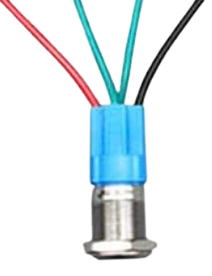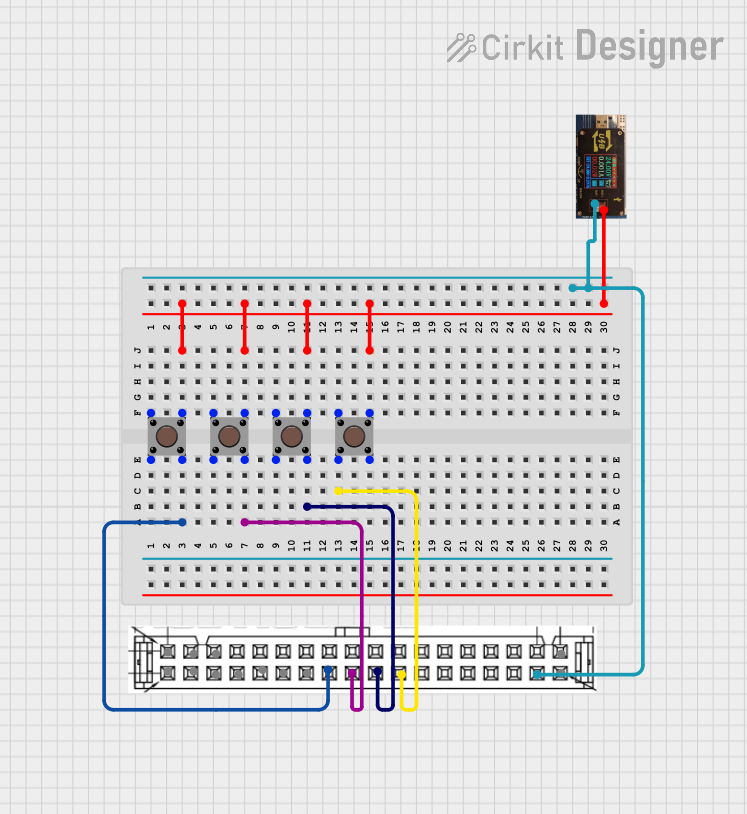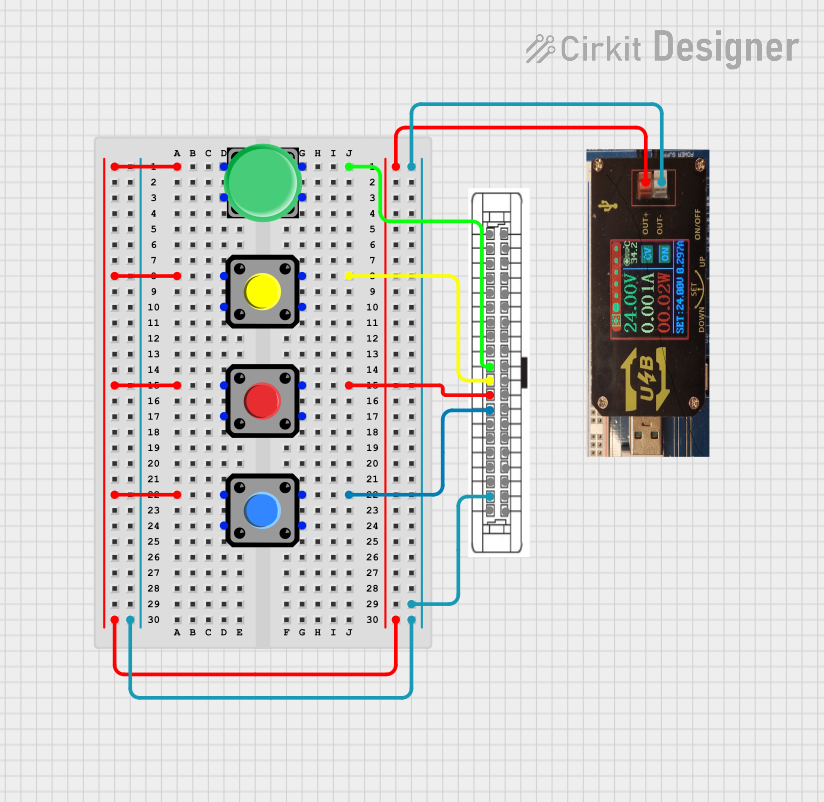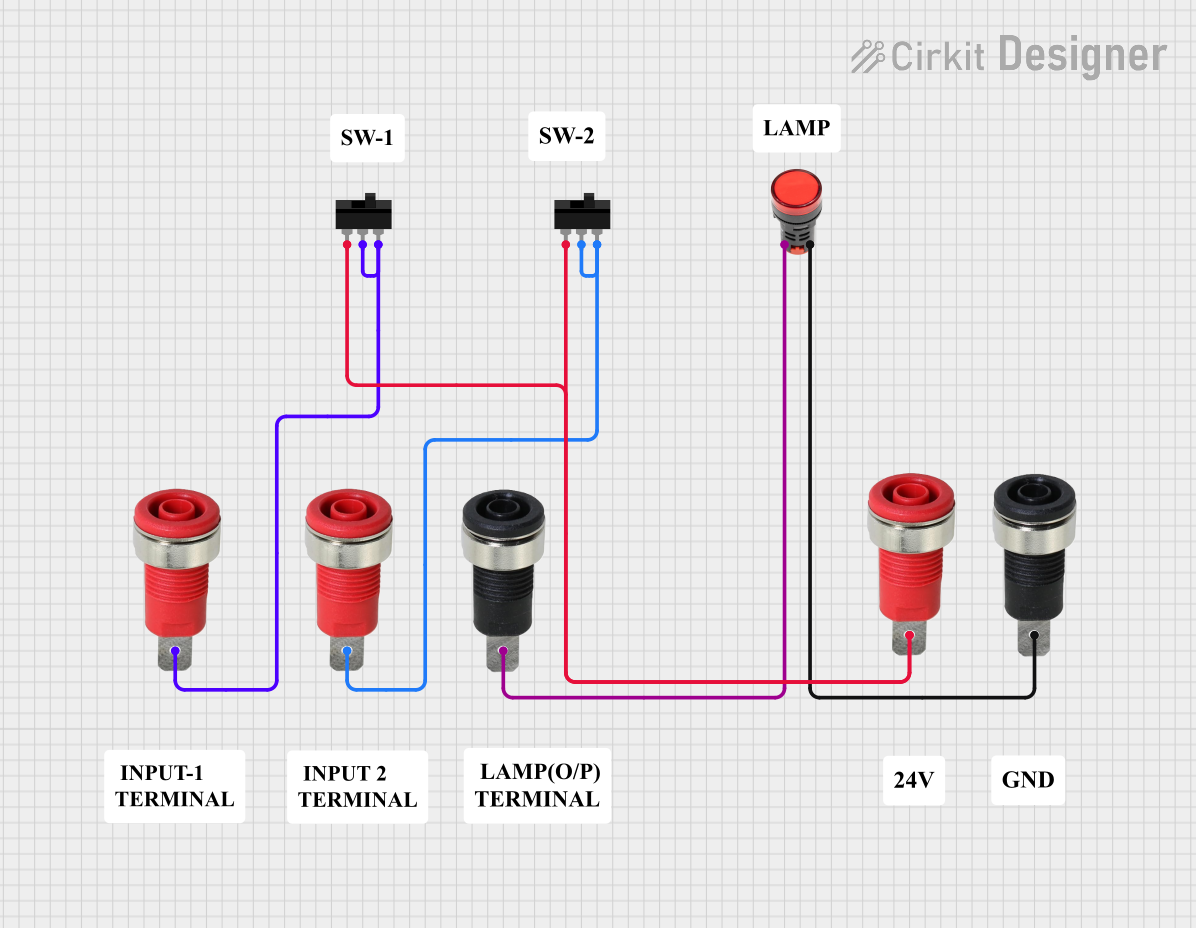
How to Use Bouton-Poussoir: Examples, Pinouts, and Specs

 Design with Bouton-Poussoir in Cirkit Designer
Design with Bouton-Poussoir in Cirkit DesignerIntroduction
The Bouton-Poussoir, commonly known as a push-button switch, is an essential component in many electronic circuits. It is used to temporarily close or open an electrical circuit when pressed. This simple yet versatile component finds applications in various domains, including consumer electronics, industrial controls, and DIY projects. Whether you are building a simple LED circuit or a complex control system, the Bouton-Poussoir is a fundamental element that can help you achieve your design goals.
Explore Projects Built with Bouton-Poussoir

 Open Project in Cirkit Designer
Open Project in Cirkit Designer
 Open Project in Cirkit Designer
Open Project in Cirkit Designer
 Open Project in Cirkit Designer
Open Project in Cirkit Designer
 Open Project in Cirkit Designer
Open Project in Cirkit DesignerExplore Projects Built with Bouton-Poussoir

 Open Project in Cirkit Designer
Open Project in Cirkit Designer
 Open Project in Cirkit Designer
Open Project in Cirkit Designer
 Open Project in Cirkit Designer
Open Project in Cirkit Designer
 Open Project in Cirkit Designer
Open Project in Cirkit DesignerTechnical Specifications
Key Technical Details
| Parameter | Value |
|---|---|
| Type | Momentary Push-Button Switch |
| Contact Rating | 50mA @ 12V DC |
| Contact Resistance | ≤ 100mΩ |
| Insulation Resistance | ≥ 100MΩ @ 500V DC |
| Dielectric Strength | 1000V AC for 1 minute |
| Operating Temperature | -20°C to +70°C |
| Mechanical Life | 100,000 cycles |
Pin Configuration and Descriptions
| Pin Number | Description |
|---|---|
| 1 | Normally Open (NO) Contact |
| 2 | Common (COM) Contact |
| 3 | Normally Closed (NC) Contact |
Usage Instructions
How to Use the Component in a Circuit
- Identify the Pins: Determine the NO, COM, and NC pins on the Bouton-Poussoir.
- Connect the COM Pin: Connect the COM pin to the ground (GND) of your circuit.
- Connect the NO Pin: Connect the NO pin to the input of the component you wish to control (e.g., an LED or microcontroller input pin).
- Optional NC Pin: If you need a normally closed configuration, connect the NC pin instead of the NO pin.
Example Circuit with Arduino UNO
Here is an example of how to connect the Bouton-Poussoir to an Arduino UNO to control an LED:
Circuit Diagram
Arduino UNO Bouton-Poussoir
5V -------------------> COM
Pin 2 -------------------> NO
GND -------------------> GND
Code Example
// Define the pin for the push-button
const int buttonPin = 2;
// Define the pin for the LED
const int ledPin = 13;
// Variable to store the button state
int buttonState = 0;
void setup() {
// Initialize the button pin as an input
pinMode(buttonPin, INPUT);
// Initialize the LED pin as an output
pinMode(ledPin, OUTPUT);
}
void loop() {
// Read the state of the push-button
buttonState = digitalRead(buttonPin);
// Check if the push-button is pressed
if (buttonState == HIGH) {
// Turn the LED on
digitalWrite(ledPin, HIGH);
} else {
// Turn the LED off
digitalWrite(ledPin, LOW);
}
}
Important Considerations and Best Practices
- Debouncing: Mechanical push-buttons can produce noise or "bounce" when pressed. Consider using a debounce circuit or software debounce logic to ensure reliable operation.
- Current Limiting: Ensure that the current through the push-button does not exceed its rated capacity (50mA @ 12V DC).
- Environmental Conditions: Operate the push-button within its specified temperature range (-20°C to +70°C) to ensure longevity and reliability.
Troubleshooting and FAQs
Common Issues Users Might Face
- Button Not Responding: Ensure that the connections are secure and that the button is not damaged.
- LED Not Turning On: Verify that the LED and resistor are correctly connected and that the Arduino code is properly uploaded.
- Button Bouncing: Implement a debounce mechanism in your code or circuit to filter out noise.
Solutions and Tips for Troubleshooting
- Check Connections: Double-check all wiring and connections to ensure they are correct and secure.
- Use a Multimeter: Measure the voltage and continuity to diagnose issues with the push-button and circuit.
- Debounce Logic: Implement debounce logic in your code to handle button bounce effectively.
By following this documentation, you should be able to effectively integrate the Bouton-Poussoir into your electronic projects, ensuring reliable and efficient operation.